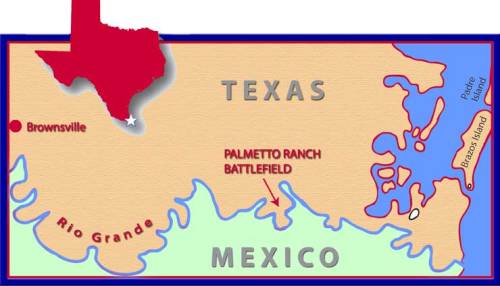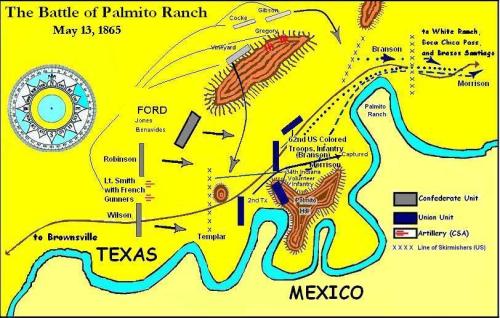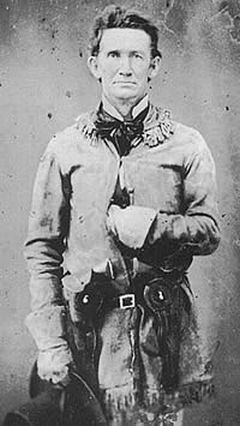peashooter85:The Last Battle of the Civil War — The Battle of Palmito RanchIn March of 1865 Union an
peashooter85:The Last Battle of the Civil War — The Battle of Palmito RanchIn March of 1865 Union and Confederate forces in Texas came to a truce and a cease fire. Both sides knew that it was only a matter of time before the war ended, and both sides knew that Texas was a minor front in the overall Civil War. So against the orders of higher ups, both armies Texas agreed that further bloodshed was useless and ended the fighting. Their objective was to wait out the rest of the war in peace until they could finally disband and go home.On April 9th, 1865 Gen. Robert E. Lee surrendered to Gen. Ulysses S. Grant at Appomattox Court House. This kicked off a domino effect in which Confederate forces all over the south surrendered as well. However there was one stubborn holdout; Gen. Kirby Smith was the commander of the Trans-Mississippi Department who refused to give in and continued to hold out despite Lee’s surrender. While Gen. Kirby Smith had little control over his troops in Texas, the men could not surrender with honor until Smith formally surrendered. So even though the fighting had ended by mid May, over a month since Lee’s surrender, both sides were officially at war but continuing their cease fire, waiting for the war to officially end.At around that time Col. Theodore H. Barrett assumed command over the forces stationed at Brazos, Texas. Col. Barrett was a staunch abolitionist and Unionist who longed to see battle and glory during the war. However throughout the war Barrett had experienced little action. With his new command Barrett sought to win battlefield glory before the war finally ended. On May 11th he formed an expedition to attack Confederate camps along the Rio Grande river. The expedition was made up of troops from the 62nd Colored Regiment, the 34th Indiana Volunteers, and the 2nd Texas Cavalry. Altogether his force numbered around 500 men. Interestingly the 50 men of the Texas Cavalry had no horses, so instead fought as light infantry.On May 12, Col. Barrett order an assault against an encampment of 300 Confederate soldiers under the command of Col. John Ford (pictured above, left) at Palmito Ranch along the Rio Grande River. Barrett ordered an immediate assault, which took the Confederates by surprise as they were not expecting a Union attack because of the cease fire. The Confederates were immediately scattered and Barrett’s men destroyed the camp and burned the supplies housed within. The Confederates regrouped and sent out a call for reinforcements. The next day Barrett ordered another attack to push back the Confederates, however they were met by a much larger force armed with cannon supplied by the French from across the river (France occupied Mexico at the time and was somewhat sympathetic to the Confederacy). It is rumored that soldiers of the French Foreign Legion and Mexican Troops also reinforced the Confederates, although such claims are unsubstantiated. The attack was immediately halted, then out of nowhere the 100 men of the 2nd Texas Cavalry rode onto the field and flanked the Union forces, driving them off the field. Barrett was forced to order a retreat, ironically ending the last Battle of the Civil War as a Confederate victory. Deaths on both sides were light, but the action was a military disaster for Col. Barrett, who had 1/5 of his force captured by the enemy. The last soldier to die in the Civil War was Pvt. John J. Williams of the 34th Indiana (pictured above, right).After the Battle of Palmito Ranch Union and Confederate forces settled back into the routine of their peaceful ceasefire. Gen. Kirby Smith finally surrendered on June 2nd, 1865, three weeks after the Battle of Palmito Ranch, and seven weeks after Lee’s surrender at Appomattox. -- source link
Tumblr Blog : peashooter85.tumblr.com



